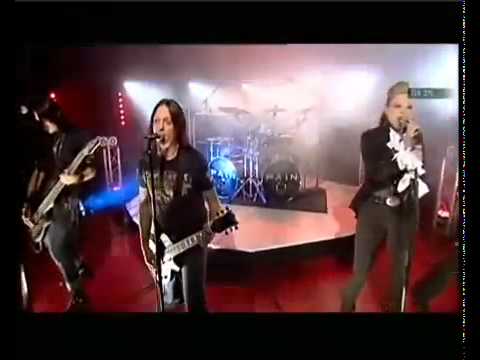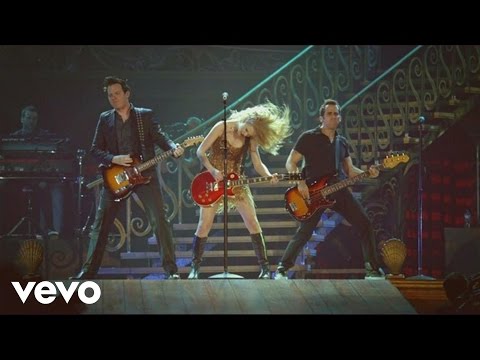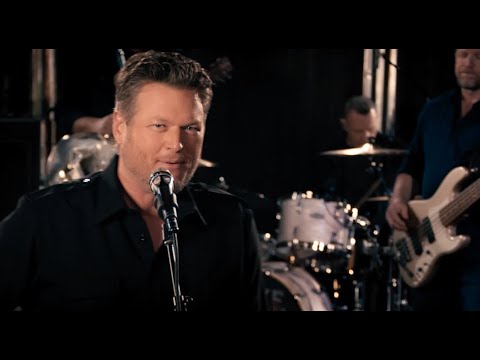If you are learning how to play the electric guitar, much to the dismay of those you live with, you are going to need an amplifier at some point (luckily, most amplifiers have a headphone jack). Sure, you can learn without an amp, but it just isn’t the same, and nothing will sound right until you have the right gear to work with. After all, if it isn’t sounding right, you may not have much incentive to keep on learning and practicing.
The thing is, when you are just starting out, it isn’t likely that you are ready to drop a load of money on expensive music gear. Thank goodness there are plenty of great amps out there for less than $500. Most of these amps can go from your bedroom to the stage, and they sound pretty great.
Today we are going to take a look at five popular guitar amps that are ideal for beginners, and won’t completely break your budget. Let’s get started.
Best Guitar Amps for Beginners: Reviews
Boss Katana 50 MKII
Here we have a great little amp that has a booster section that works great with cleans, and you can get that tube amp sound. If you are into hard rock or metal, you will love the crunch setting, and by using the gain knob, you can easily go from metal to classic rock.
The Boss Katana 50 MKII offers 50 watts of power, five channels, a 12” speaker, and several effects. It weighs less than 12 pounds, making it super-easy to transport to lessons, rehearsals, and gigs. It even reacts quite nicely to the volume knob on most guitars. You won’t lose any of that crunch quality, no matter how low the volume is.
If you want to switch between electric and acoustic-electric guitars, this amp even has an acoustic setting. The sound quality will depend on the pickup in the guitar.
Pros
- Awesome distorted and clean tones
- Plenty of versatility
- Lots of bang for your buck
- Can use up to five effects at one time
- Easy to use
Cons
- May not be loud enough for some gig venues
CHECK LATEST PRICE ON AMAZON.COM
Blackstar Fly 3 Bluetooth
If you don’t have a lot of room to store your gear, the Blackstar Fly 3 Bluetooth is a great choice. This amp may be small in size, but it is huge where it counts, and that is sound quality (not to mention volume).
This amp weighs less than a kilogram, and you might be surprised at just how much volume comes out of the little 3” speaker. Of course, you can also play quietly while still achieving the sound you really want.
There are two channels, so you can switch between clean and gritty sounds, and there is even a delay effect. This 3-watt amp can be connected to another one for stereo sound, and the Bluetooth technology allows you to jam with backing tracks or even streaming.
Pros
- Lightweight and portable
- Reliable Bluetooth technology
- Switch between sounds
Cons
- Not much more than a practice amp
CHECK LATEST PRICE ON AMAZON.COM
Fender Mustang LT50
One can’t discuss guitars and amps without mentioning Fender. This is a company that not only makes some of the best guitars in the world, but also makes some pretty awesome amplifiers. The great thing about this amp is that even though it is a Fender, so you know it’s awesome, it isn’t going to break the bank.
The Fender Mustang LT50 offers up 50 watts of power, and has one 12” speaker. It has one channel, but there are actually 20 amp voices to play around with, and you can use delay and modulation effects. Weighing in at less than 9 kg, it isn’t the most portable amp in the world, but it isn’t overly cumbersome either.
One of the things we love the most about this amp is the fact that you can store voicings. That way, you don’t have to set things up all over again later on, because they will be there, ready to use.
Pros
- 20 voicings
- Plenty of versatility
- Preset capability
Cons
- Not the most attractive amp in the world, but looks aren’t everything
CHECK LATEST PRICE ON AMAZON.COM
VOX VX15 GT
Here is an amp that is quite different from the rest of the amps on this list. Instead of the standard design that you would expect to find for a practice amp, the VOX VX15 GT has a cabinet that is super lightweight, and is made from ABS. It has a bass-reflex design, which gives you great lows and plenty of sound projection.
One of the things we like the most about this amp is the range of onboard sounds, including AC30 tones to crunchy metal sounds. No matter what tone you want, you will be able to achieve it with this amp.
There is a 6.5” speaker, and the amp is lightweight (just over 8 pounds) and very portable. This means you can take it anywhere for lessons, jamming, and so much more.
Pros
- Lightweight and portable
- Attractive, modern design
- Lots of effects to play around with
Cons
- The appearance isn’t for everyone
CHECK LATEST PRICE ON AMAZON.COM
Yamaha THR10II
Another great name in amplifiers is Yamaha, and if you are looking for the best beginner gear, this is definitely a brand to check out. The Yamaha THR10II is one of the best practice amps available, and it only costs around $400.
This is a compact, 20-watt amp that has two 3.1” speakers with full range, and weighs just 3kg. It has several channels, including five guitar amp models (with an additional 10 when you use the app), an acoustic model (two more with app) and a bass model (2 more with app). There is also one flat voicing (two more with app).
If you are looking for an amp that has plenty of volume, sounds great, and won’t take up a lot of space or eat your budget, this is definitely one to consider.
Pros
- Lots of sounds
- Audio playback (Hi-Fi quality)
- Well-built
Cons
- High-gain tones aren’t the greatest
CHECK LATEST PRICE ON AMAZON.COM
Buyer’s Guide
Before you go out and lay out cash for a new amplifier, there are certain things that you will need to consider. For instance, what type of music are you interested in playing? Will you be playing solo or in a band? Do you have a specific genre you enjoy more than others? Do you use electric or acoustic-electric guitars?
The amp you choose will have a huge impact on the sound of your guitar. Some amps will give you a clean sound, which is great for jazz, pop, and indie rock. Others will give you the distortion you need for hard rock and heavy metal.
Here are a few more things to consider before purchasing your first guitar amp.
Volume
Do you play loudly, or do you prefer to have a softer volume? If you are just looking for a practice amp to use at home, it won’t really matter all that much if it isn’t a loud one. On the other hand, if you want to go out and jam with other musicians at some point, you will need something with plenty of volume (just be sure to not out-volume your fellow musicians).
Volume is measured by watts and speaker sizes. Many smaller practice amps use up to 30 watts of power, and tend to have speakers that measure anywhere from 6 to 10 inches. These amps are ideal for playing at home and in the classroom.
Size and Weight
The next thing to consider is the size and weight of the amp. If you don’t plan on taking it out of the house, it won’t really matter if it is big and heavy (unless you are short on space). If you plan on taking the amp out to jam or to play gigs at some point, you will want something that is relatively easy to lug around.
Construction
Something else to think about are the materials used in the construction of the amp. The case or cabinet is generally made from wood. The thickness of the wood will have an effect on the sound quality. The construction will also play a factor in the weight, which we discussed above.
Types of Amps
There are different types of amps, and it is important to know about each type in order to choose the best amp for your needs. There are four main amplifier types: solid state, which are clean sounding, durable, and reliable; tube amps, which use vacuum tubes to increase power and volume and have clean and distorted channels; modeling amps or digital amps, which use software to emulate the tube amp sound; and hybrid amps, which can be a combination of vacuum tubes and solid state tech, and use a preamp and solid state circuitry.
Effects and other Special Features
You will also need to consider the effects you will likely want to use. Most amps have some digital effects, including reverb, tremolo, and loops. Look for an amp that lets you switch from clean to distorted sounds for various styles of music. Some amps have EQ controls for every channel, which can come in pretty handy when you want to adjust volume and distortion.
Keep in mind that no musician usually uses all of the effects available, so you don’t need to spend a lot of money on an amp that has effects you may never use. Think about the effects you want to use, and look for amps that offer those effects.
FAQs
If you are in the market for your very first guitar amp, you probably have a lot of questions. Here are some answers to some of the most commonly asked questions about guitar amps.
Why do you need an amplifier?
This may seem like a silly question, but it is a legitimate one. Think about where you plan to play. Will you just be practising at home for the time being? Do you plan to jam with other musicians or even play on stage? If your intention is to play outside of your home someday, look for an amp that will suit your needs both now and in the future.
What type of amp is best for home use?
If you are only going to be using the amp for practising at home, you aren’t going to need anything that has a lot of power or volume. In fact, if you live in an apartment or a dorm, there may be some pretty severe restrictions as to how loud you will be allowed to play in the first place. In this case, it may be best to look for a smaller amp that is also portable if you do want to play outside of the home someday.
How many watts of power should an amp have?
This question can be difficult to answer. It really all depends on when and where you are going to be using the amp in the first place. For practice and at home, a smaller, 1-20 watt amp will suffice. If you will be doing club gigs at some point, look for an amp that is 15-50 watts. For playing on larger stages, you will want an amp that is 30-100 watts. Keep in mind that it is best to judge the volume by decibels rather than watts.
Can I plug headphones into the amp?
If you are going to be practising at home where others may be disturbed, it is best to be able to plug in a pair of headphones so you can play quietly. Most amps have a headphone jack, so this won’t be much of a problem.
Do I need an amplifier for acoustic guitars?
Whether or not you need an amp for acoustic guitars depends on where you are playing, and the type of guitar you are playing. If you have an acoustic-electric guitar and you want to get plenty of volume, then the answer is yes. On the other hand, if you are simply playing for your own enjoyment, at house or beach parties, etc., chances are you don’t really need an amplifier.
Conclusion
Now that you have some information about some of our favorite beginner guitar amps, it is time to go out and do some comparison shopping. It is always a good idea to actually try out several amps at your local music store, if this is an option for you. You can always shop online for a better deal later, but you will never know how it sounds until you actually plug in your guitar and start playing.

























